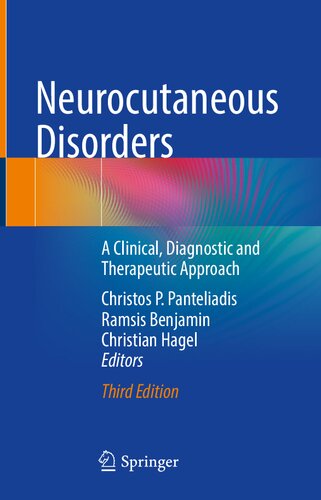

Most ebook files are in PDF format, so you can easily read them using various software such as Foxit Reader or directly on the Google Chrome browser.
Some ebook files are released by publishers in other formats such as .awz, .mobi, .epub, .fb2, etc. You may need to install specific software to read these formats on mobile/PC, such as Calibre.
Please read the tutorial at this link: https://ebookbell.com/faq
We offer FREE conversion to the popular formats you request; however, this may take some time. Therefore, right after payment, please email us, and we will try to provide the service as quickly as possible.
For some exceptional file formats or broken links (if any), please refrain from opening any disputes. Instead, email us first, and we will try to assist within a maximum of 6 hours.
EbookBell Team

4.0
76 reviewsThis book provides extensive data on the more common and many of the more rare congenital and hereditary syndromes that manifest in the nervous system and skin. Though often complex and multi-systemic, these disorders can frequently be diagnosed using a combination of simple visual inspection and sound clinical expertise.
Drawing on fully referenced information from thousands of articles, the international editorial team has prepared a comprehensive overview that includes historical perspectives, clinical features, the pathogenesis, and diagnostic and therapeutic strategies. In addition, it addresses the biochemical, molecular, and genetic basis of the disorders.
The book is divided into four main sections. Starting with general aspects of aetiology, diagnostics and therapy, the first part then covers the genetics, neuro-imaging, neuropathology, ocular manifestations and surgical management. The second part discusses developmental malformations, such as Sturge-Weber syndrome, Ataxia-Telangiectasia, Hypomelanosis of Ito and other rare syndromes, including haemangiomas. The focus of the third part is on tumour suppressor/DNA repair disorders, the most common of which is Neurofibromatosis 1. It also describes Neurofibromatosis 2, Schwannomatosis, Tuberous sclerosis, von Hippel-Lindau disease, Naevoid basal cell carcinoma and others. The book’s fourth and final section covers defects in enzymes and structural proteins, which manifest as Cerebrotendinous xanthromatosis, Ehlers-Danlos syndrome, Menkes syndrome, Refsum disease.